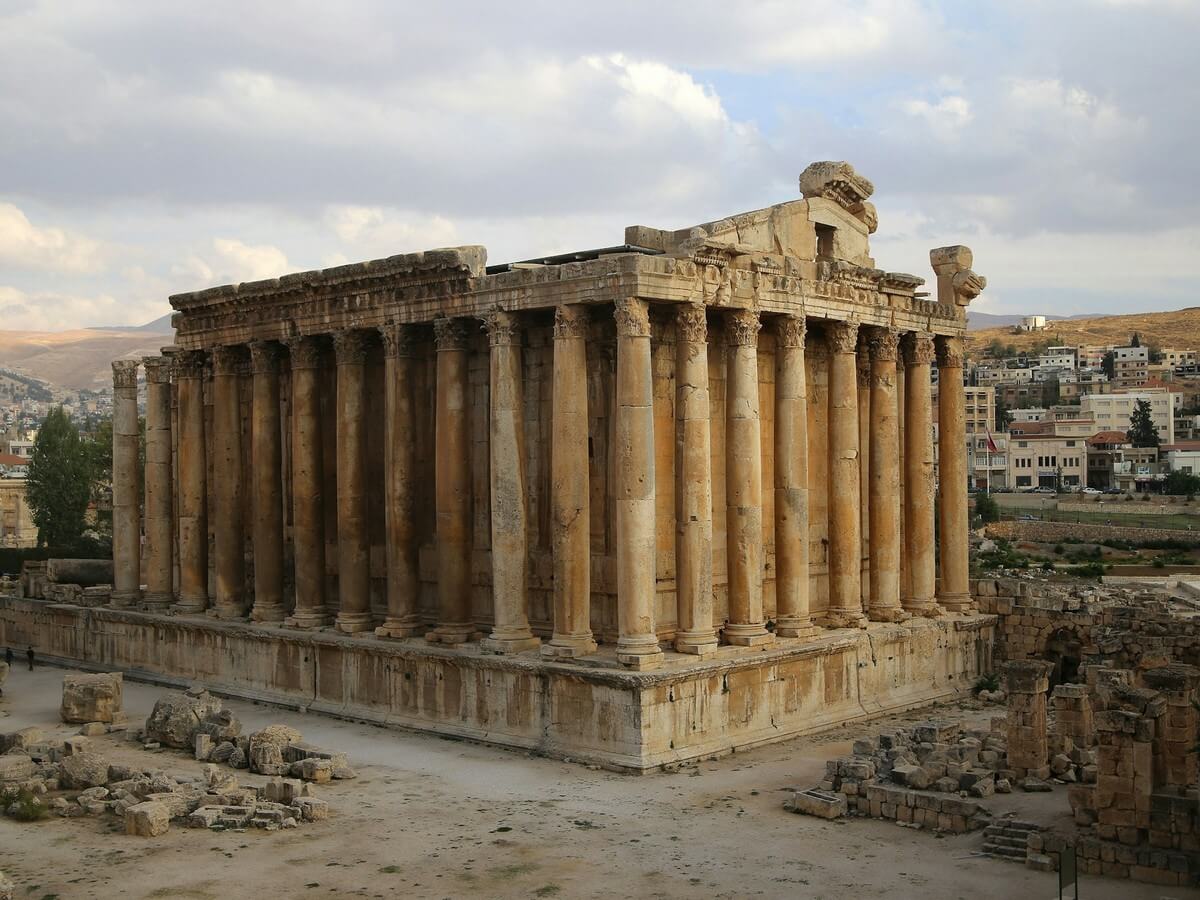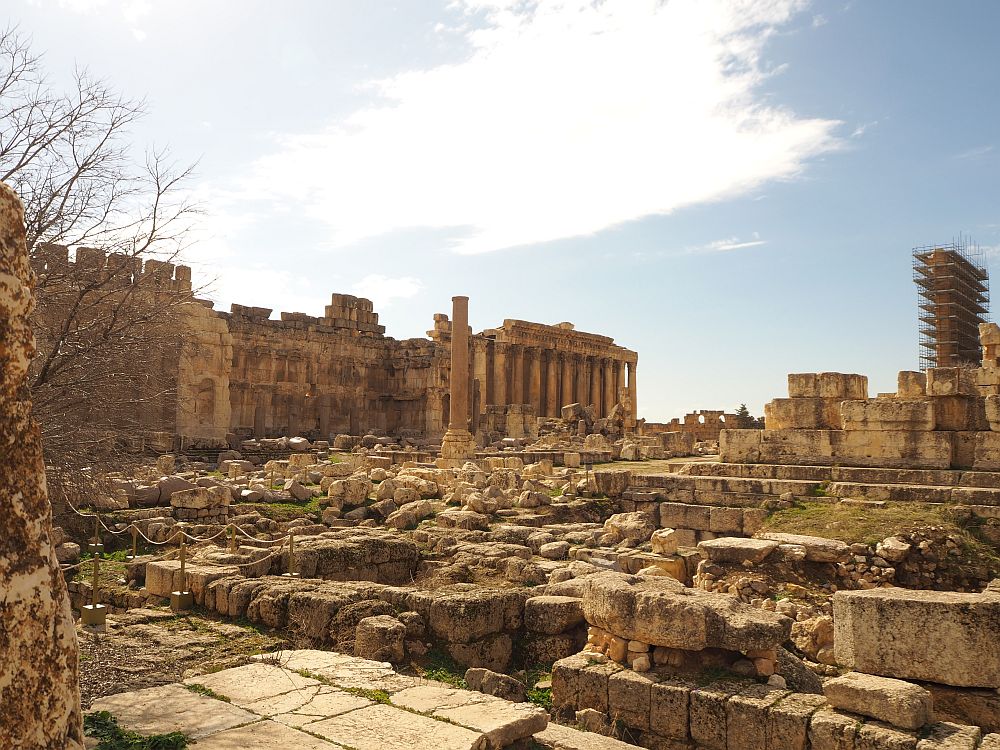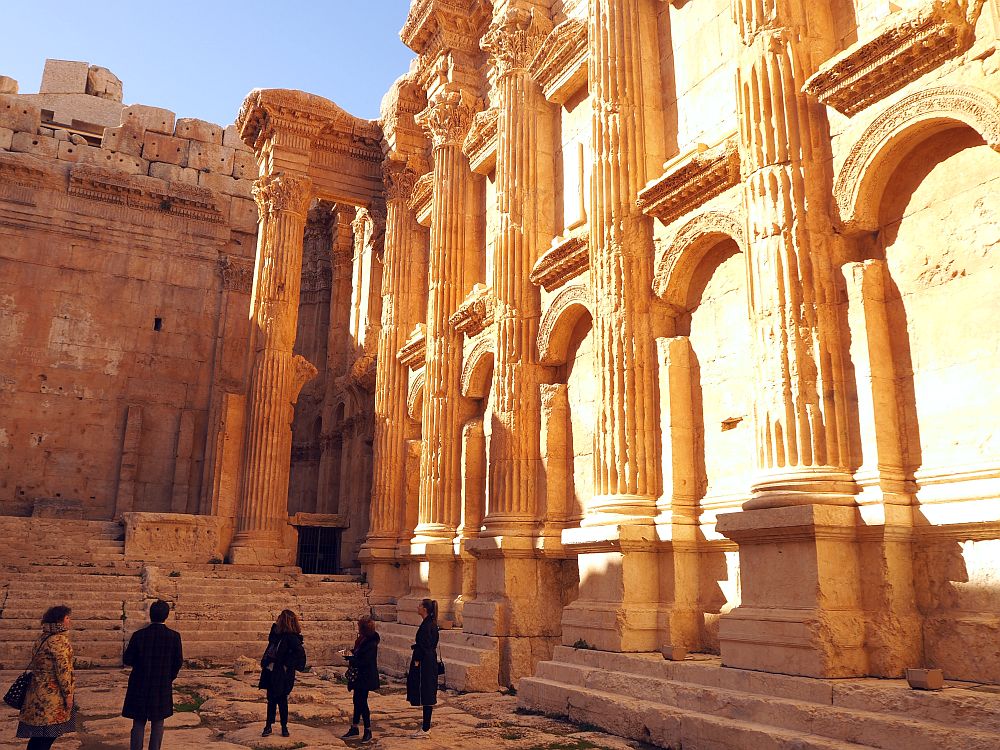Walking Among Giants: The Immense Beauty of Baalbek Temples

Introduction
Overview of Baalbek Temples
Nestled in the picturesque Bekaa Valley of Lebanon, the Baalbek Temples stand as a testament to ancient architectural ingenuity and cultural significance. These monumental ruins, often referred to as one of the most important archaeological sites in the world, showcase a blend of Roman, Greek, and local Phoenician influences.
If you were to wander through these incredible remnants, you would quickly be struck by their sheer scale and the remarkable craftsmanship that has withstood the test of time. The primary structures, including the Temple of Bacchus and the Temple of Jupiter, are renowned for their size, intricate carvings, and grand columns. The temple complex served not only as a religious site but also as a centre for commerce and social gatherings, making it a crucial hub in the ancient world.
Historical Significance of Baalbek
As you explore Baalbek, you can't help but appreciate its rich historical tapestry. This site has a history that dates back over 9,000 years, making it one of the oldest continuously inhabited places on Earth. Key highlights of Baalbek's historical significance include:
- Religious Centre: Initially a site for pagan rituals, it transformed into a key location for early Christians.
- Roman Influence: Under Roman rule, Baalbek flourished, becoming the Roman city of Heliopolis, where emperors like Augustus and Nero played vital roles in its development.
- Cultural Melting Pot: Throughout various reigns, including the Byzantine and Ottoman, Baalbek was a melting pot of cultures and traditions, reflecting its diverse population.
The legacy of Baalbek extends beyond its ruins; it has inspired countless scholars, historians, and artists throughout the ages. From exploring the architectural styles to pondering the rituals held within its temples, Baalbek ignites a sense of curiosity about the past.
As you delve deeper into the marvels of Baalbek Temples, you not only witness the grandeur of ancient civilizations but also grasp the complex history that makes this site truly remarkable.

Construction and Architecture
Design and Layout of the Temples
As you step into the grand complex of the Baalbek Temples, the meticulous design and thoughtful layout immediately command your attention. The architecture here isn’t just functional—it's a celebration of artistry and spirituality that reflects the ambitions of ancient builders. The main components of the site include:
- Temple of Jupiter: Once one of the largest temples in the Roman Empire, it’s dedicated to the chief deity. The impressive layout features a vast courtyard framed by iconic columns.
- Temple of Bacchus: This temple stands out for its incredible preservation and stunning carvings that evoke the vibrant celebrations surrounding the god of wine and festivity.
- Sacred Precinct: The temples are surrounded by a grand enclosure and include a series of altars, showcasing the significance of the site as a religious hub.
Walking through the site, you can’t help but notice how the building materials and structures harmoniously blend with the landscape, creating a stunning visual palette that must have been just as awe-inspiring in ancient times.
Megalithic Stones of Baalbek
Perhaps one of the most fascinating features of Baalbek is its megalithic stones, which have bewildered historians and engineers alike. An impressive collection of enormous stones composes the foundations, some weighing in at over 800 tonnes.
Imagine standing next to one of these massive blocks; it truly puts into perspective the sheer effort and ingenuity required to construct such an architectural marvel. Key highlights about these megalithic stones include:
- Stone of the Pregnant Woman: At an astounding 1,000 tonnes, this stone is the largest known stone block used in construction processes. It raises questions about how ancient civilisations managed to transport and position such colossal structures.
- Construction Techniques: Scholars continue to debate the methods used in moving and shaping these stones, with theories ranging from levers and sledges to human ingenuity combined with a lack of advanced technology.
The mystery surrounding these megalithic stones adds a layer of intrigue, captivating the imaginations of visitors, young and old alike. Every corner of Baalbek invites you to ponder its historical significance, making this magnificent site an enduring emblem of human achievement and creativity.
Cultural Influence
Religious Significance
Delving deeper into Baalbek, you’ll find that its temples are not simply grand structures but hold profound religious significance that has shaped the spiritual landscape for millennia. Originally serving as a hub for ancient pagan religions, Baalbek transformed into a vital site for the worship of multiple deities. The religious significance can be summarised through key aspects:
- Diverse Deification: The site hosted numerous temples dedicated to various gods, including Jupiter, Bacchus, and Venus, showcasing the polytheistic beliefs of the ancient inhabitants.
- Ritual Practices: Intricate rituals, often tied to the agricultural calendar, were conducted in these temples, linking the divine to everyday life. Imagine witnessing the lively festivals that would have filled these spaces with song and dance, celebrating fertility and bounty.
- Transition to Christianity: As Christianity spread, many of the temples were repurposed, adapting to the changing spiritual landscape while maintaining their historical significance.
The spiritual resonance of Baalbek continues to attract pilgrims and tourists alike, eager to connect with its rich past and explore its eternal charm.
Impact on Ancient Civilisation
Baalbek’s influence extends far beyond its religious significance; it played a pivotal role in the development of ancient civilization in the region. The city emerged as a centre of cultural, political, and economic activity, shaping the course of history in ways that are still evident today. Key points about its impact include:
- Cultural Exchange: Baalbek was a melting pot of cultures where Phoenician, Greek, and Roman influences converged. This cultural exchange enriched arts, literature, and philosophy, paving the way for future advancements in these fields.
- Economic Prosperity: The city’s strategic location facilitated trade between the Mediterranean and the East, making it a prosperous hub that contributed to the Roman Empire’s wealth.
- Architectural Standards: The grandeur and intricate designs of Baalbek’s temples influenced other architectural projects across the empire, setting a standard that would be emulated for centuries.
In reflecting on Baalbek’s cultural influence, it becomes evident that this remarkable site was not simply a backdrop for religious ceremonies but a dynamic, thriving centre that played a significant role in the evolution of ancient civilization. Here, stone and spirit coalesce to tell stories of a time when humanity’s ambitions reached for the heavens.

Preservation Efforts
Challenges in Preserving the Temples
As you explore the magnificent structures of Baalbek, it's essential to recognise that these temples are not only historical wonders but also face significant challenges in preservation. The passage of time and external factors have made the task of safeguarding them increasingly critical. Some of the primary challenges include:
- Environmental Wear: The weather conditions in the Bekaa Valley can be extreme, with heavy rain and occasional earthquakes contributing to the degradation of the ancient stone structures. Imagine how these forces of nature have slowly eroded intricate carvings that once stood proud and clear.
- Urban Development: As Lebanon continues to grow, urban expansion poses a threat to the surrounding archaeological sites. Balancing modernisation with preservation is a constant battle that requires careful planning and awareness.
- Political Instability: The region's tumultuous history has hindered consistent preservation efforts. Instability can divert funds and attention away from critical conservation projects, making it challenging to implement long-term strategies.
Conservation Initiatives
Despite the numerous challenges, a robust framework of conservation initiatives aims to protect Baalbek's rich cultural heritage. These efforts are crucial for ensuring that future generations can appreciate the grandeur of the temples. A few noteworthy initiatives include:
- International Collaboration: Various local and international organisations have come together to promote preservation programmes. They share expertise and resources with the aim of conducting thorough assessments and restoration projects. Imagine the excitement of a group of experts pooling their knowledge to revive something that has inspired countless souls.
- Community Engagement: Encouraging local communities to participate in preservation efforts is vital. Educational programmes and workshops raise awareness and foster a sense of ownership among residents, helping to instil a culture of conservation.
- Technological Advancements: Modern technology, such as 3D scanning and digital modelling, is being employed to document and analyse the temples' condition. This cutting-edge approach allows for detailed mapping and planning for restoration works, paving the way for more effective intervention strategies.
Baalbek’s temples are a direct link to our past, with preservation efforts crucial to their endurance. The collaboration between experts, the local community, and innovative technologies forms the backbone of these initiatives, ensuring that the awe-inspiring beauty of Baalbek continues to captivate those who visit.
Visitor Experience
Tourist Attractions at Baalbek
Visiting Baalbek is like stepping into a time capsule, where each stone and column whispers tales of an ancient past. The site is not solely about the temples; it offers a variety of experiences that keep visitors enchanted throughout their exploration. Key attractions include:
- The Temple of Bacchus: Considered one of the best-preserved temples from the Roman period, its massive scale and decorative reliefs are awe-inspiring. The moment you walk beneath the towering columns, you may feel as if you're entering a sacred space that has stood the test of time.
- The Temple of Jupiter: This remarkable structure, though partially ruined, retains an overwhelming presence. Marvel at its colossal size and imagine the grandeur it once embodied during ancient ceremonies.
- The Festival of Baalbek: If you visit in summer, you're in for a treat! This annual festival features music and dance performances held against the breathtaking backdrop of the temples, creating an unforgettable atmosphere. Picture yourself enjoying traditional tunes as the sun sets, casting a warm glow on the ancient stones.
- Baalbek's Museum: Don't miss the museum on-site, which houses various artefacts and informational displays that provide context about the site’s rich history. It's a perfect way to deepen your understanding of the remarkable culture that flourished here.
Practical Information for Visitors
Planning your trip to Baalbek can enhance your experience and ensure a seamless visit. Here’s what you need to know:
- Opening Hours: The site is generally open daily from 8:00 AM to 7:00 PM, but it's wise to check for seasonal changes or special closures.
- Entrance Fees: Entry fees are modest, yet they contribute to the ongoing preservation efforts. A small price to pay for such a breathtaking journey into the past!
- Guided Tours: Consider joining a guided tour to enrich your visit. Knowledgeable guides can share captivating anecdotes and insights that you may not discover on your own. Engaging with local history truly enhances your trip!
- Accessibility: While the main sites are accessible, some areas may be challenging for those with mobility issues. It’s good to wear comfortable shoes and prepare for uneven terrain.
As you plan your visit to Baalbek, anticipation builds for the awe-inspiring temples and rich experiences waiting for you. This ancient site offers a unique opportunity to connect with history in a way that feels alive; it's not just a visit—it's a journey through time.
Conclusion
Reflection on the Beauty and Grandeur of Baalbek Temples
As we reflect on the extraordinary experience of exploring Baalbek, it becomes evident that the beauty and grandeur of its temples are truly unparalleled. These magnificent structures invite you to delve into a world where human creativity and devotion converge in breathtaking architecture. One cannot help but be struck by:
- The Architectural Marvels: Walking amidst the colossal columns of the Temple of Bacchus or gazing upon the remnants of the Temple of Jupiter offers moments of pure wonder. The intricate carvings and thoughtfully designed layouts remind us of the artisans' skill and passion that crafted these astounding monuments.
- A Sense of Connection: Standing in these ancient spaces, you often feel a profound connection to the multitude of people who walked these grounds before you. Their spirit lingers in the air, connecting you across centuries. Imagine sitting quietly in the courtyard, allowing the weight of history to envelop you.
- Stunning Landscapes: With the backdrop of the majestic Lebanese mountains, the serenity of the surrounding landscape adds to the enchantment of Baalbek. This combination of natural and man-made beauty creates an atmosphere that resonates with visitors, drawing them back time and again.
Importance of Preserving Historical Sites
Recognising the beauty of such historical sites brings us to the crucial responsibility of preservation. The temples of Baalbek are not just relics of the past; they are vital parts of our global heritage. Here are some reasons why preserving historical sites is essential:
- Cultural Identity: These sites provide insight into the diverse cultures and communities that have shaped our world. They help us understand our roots and promote cultural diversity.
- Educational Value: Historical sites serve as open-air classrooms, allowing us to learn about architecture, history, and preservation techniques through firsthand experiences. They inspire curiosity and appreciation for our shared past.
- Tourism and Economy: Well-preserved sites attract visitors, boosting local economies and supporting community livelihoods. Tourism creates a connection among people and paths while fostering respect for history.
In conclusion, Baalbek stands as a reminder of the greatness humanity can achieve. Protecting such sites is not only a duty but a privilege that enables future generations to appreciate the narratives etched in stone. As guardians of history, it’s our responsibility to embrace and cherish these remarkable treasures that define our shared heritage.
